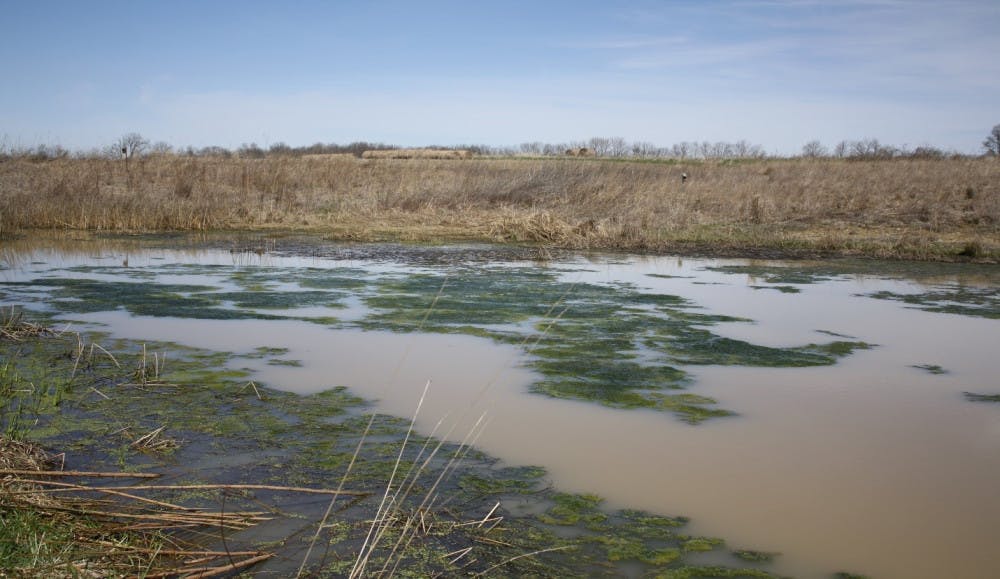Any good project, whether it’s a restoration project, an essay for a class, or independent research, first starts with a little trip to the library.
We (as in our group, called Team Plaid) is comprised of my friends Cayla, Maria, and Andrew and me. We first studied all of Southwestern Ohio’s various natural land cover types, (that is prairies, wetlands and riparian corridors, and forests of all ages). After careful deliberation, 30 + pages of synthesis of material, a few emails with the client Donna, (and four bad cases of carpel tunnel), and our group chose to work primarily with the wetland on the Edge of the Farm Conservation Site.
Unfortunately, many wetlands have been drained to make way for human activities such as agriculture and housing developments. Restoring and protecting the wetlands is of vital importance as wetlands provide many ecosystem services such as nitrogen and phosphorous recycling and serve as valuable carbon sinks.
Wetlands are also home to certain wildlife such as amphibians which cannot complete their life cycles without the wetland’s abundant moisture and would die out. Wetlands are also home to certain water-loving plant life that could not survive without their natural habitat.
Specifically, our group, over the course of the past couple of weeks and until the end of the semester, will be removing invasive species and cattails that have taken over in the wetlands, completing a species index of plant and animal species that we find, planting black willows around the wetlands and streams, lining and marking the trails, and also working with a new technology of floating vegetation mats that will help promote the removal of nitrogen and phosphorous from the wetlands.
These mats act as manmade islands that wetland plants are planted on, allowing for increased vegetation that act as sinks for nitrogen, phosphorous and carbon. Once the plants have been allowed to mature, the vegetation above the water line is removed and the nutrients with it, and the cycle can start up once again!
Stay tuned for progress updates and pictures, all of which the talented Maria Dellapina took!
Restoration Project: A Chance to do Something

